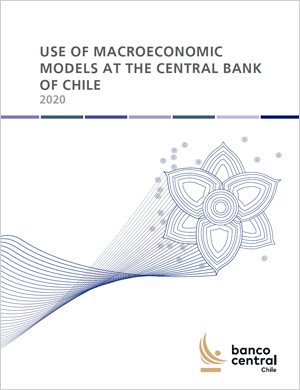Use of Macroeconomic Models at The Central Bank of Chile
Uso de Modelos Macroeconómicos en el Banco Central de Chile
Use of Macroeconomic Models at The Central Bank of Chile 2020
Description
The way that the Board of the Central Bank of Chile (CBC) interprets the objective outlined in its Organic Constitutional Law (LOC) regarding the currency’s stability translates, in operating terms, into maintaining forecasted annual inflation at 3% over a policy horizon of around two years.
Within the framework of the CBC’s commitment to increasing transparency, this book provides a broad description of the different economic models that assist the Board in this task and their role in the decision-making process and as tools for analysis and forecasting.
At the CBC, economic models are used as organizers of the analytical framework with which inflationary behavior and monetary policy (MP) transmission mechanisms are studied, to forecast inflation and other variables of interest, and to evaluate how the economy would respond to different events and interest rate trajectories. In an ever-changing economy, no model can fully
encompass all the relevant factors for determining monetary policy. In that sense, the Board’s vision on the economy rests on examining various models, applying judgment as needed, based both on the circumstances of the moment, and on an assessment of each of the models’ limitations.
The models described in this document, which is an update of the book “Modelos macroeconómicos y proyecciones del Banco Central de Chile” published in 2003, are under constant study and refinement, and evolve as techniques for dealing with macroeconomic policy issues progress. The Board of the CBC will determine the future guidelines of the modeling agenda as new challenges arise.
Use of Macroeconomic Models at The Central Bank of Chile 2020
Boxes and graphics

